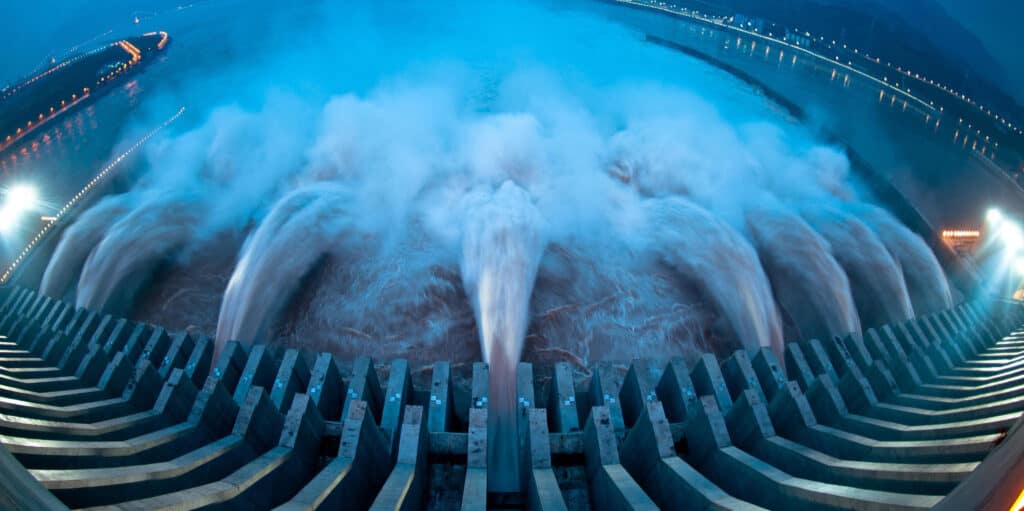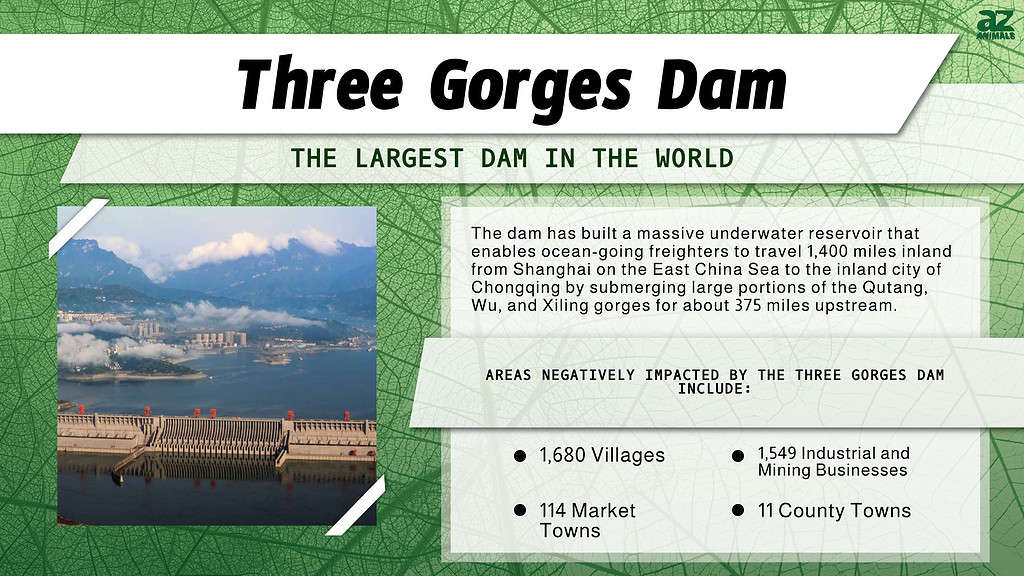A lot of different people have made contributions to the long and complex history of power generation, which is dotted with numerous conceptual and technological milestones. Although the sun, wind, and water have been used to generate energy for thousands of years, technology has made great strides since then, and these old-fashioned energy sources have evolved into cutting-edge, modern power sources.
The dynamics of how power plants operate are constantly changing, from hydroelectric and nuclear to coal-fired and solar power plants. According to BloombergNEF, global electricity demand will increase from 25,000 terawatt-hours in 2017 to approximately 38,700 terawatt-hours by 2050.
Hydropower, which advanced quickly, was the first technology to become a widely used commercial source of electricity generation. In 1880, the Wolverine Chair Co. in Michigan used hydropower to generate Direct Current electricity. A belt-driven dynamo at the factory that was powered by a water turbine lit 16 arc street lamps.
Two years later, in Appleton, Wisconsin, the first central Direct Current hydroelectric station in history powered a paper mill. By 1886, there were 40 to 50 hydroelectric plants operating in the US and Canada alone, and by 1888, about 200 electric companies were using hydropower at least partially. When it started operations in 1889, the Willamette Falls Station in Oregon City, Oregon, became the nation’s first hydroelectric facility to use alternating current.
Description of the World’s Largest Hydroelectric Dam
The Three Gorges Dam in Hubei Province, central China, is the world’s largest hydroelectric dam. Since its completion in 2012, the 22,500MW hydroelectric facility has held the number one position, surpassing the Itaipu Dam on the Brazil-Paraguay border, which was opened in 1984. Its generating capacity is more than three times the capacity of Grand Coulee Dam, the largest dam in the United States and 5th overall worldwide.
It is a straight-crested gravity structure made of concrete that is 2,335 meters (7,660 feet) long and rises to a maximum height of 181 meters (607 feet). Its construction uses 463,000 metric tons of steel and 28 million cubic meters of concrete, or 37 million cubic yards.
The dam has built a massive underwater reservoir that enables ocean-going freighters to travel 2,250 km (1,400 miles) inland from Shanghai on the East China Sea to the inland city of Chongqing by submerging large portions of the Qutang, Wu, and Xiling gorges for about 600 km (375 miles) upstream.
The five-tier ship locks at either end of the complex, which allow ships of up to 10,000 tons to pass the dam, and a ship lift, which allows vessels of up to 3,000 tons to bypass the ship locks and pass the dam more quickly, enable navigation of the dam and reservoir. The lift was the biggest ship lift in the world when it was completed in late 2015, measuring 120 meters (394 feet) long, 18 meters (59 feet) wide, and 3.5 meters (11 feet) deep.
The Three Gorges Dam spans the Yangtze River, China’s longest river, approximately 44km (17.3 miles) from the city of Yichang in Hubei province, and was constructed by the state-owned China Three Gorges Corporation (CTG).
Wondering why it’s called the Three Gorges Dam? The Qutang, Wu, and Xiling gorges, through which the Yangtze River winds its way through this mountainous region, are referred to as the “Three Gorges.’’ The hydroelectric plant set a new record for annual power generation volume in 2020 with 111.88-kilowatt hours produced.

The Three Gorges Dam is the largest hydroelectric dam in the world.
©isabel kendzior/Shutterstock.com
History of the Three Gorges Dam
Fears of a dam collapse and significant displacement risks prevented the project from starting for about 40 years. This was in spite of the Three Gorges Dam’s initial thorough planning in 1955.
The National People’s Congress finally decided to build the dam in 1992 based on a feasibility study that was completed in 1988, and construction began in 1994.
The project was developed over the course of four phases after the initial planning phase. The first phase, which ended in 1997, included earthworks for the construction of the basic framework for the power facility and the rerouting of the Yangtze River.
Three Gorges was the largest dam structure in the world when the main wall of the dam was finally completed in 2006. It needed to be filled with 31.98 million cubic meters of stone and earth, 102.83 million cubic meters of stone and earth had to be removed, and 27.94 million cubic meters of concrete had to be poured.
During the second phase, 14 Francis turbine generator units, each with a 700 MW capacity, were set up on the river’s left bank. For the initial capacity of 9,800MW, major equipment supply contracts were given out in 1997. The plant’s first 14 units were installed between 2003 and 2006. Also, the height of the dam was increased to 87 meters and a permanent ship-lock with a height of 135 meters was built on the southern bank.
The third phase saw the installation of 12 more 700 MW-capable Francis turbine generator units on the northern bank of the river, bringing the plant’s total installed capacity to 18,200 MW by October 2008.
The project’s final development stage began in 2011 and ended in 2012 with the installation of six 700MW Francis turbine units in the plant’s underground powerhouse.
Thanks to this and two 50MW plant power generators, the total installed capacity was raised to 22.5GW.

The Financial and Socio-Economic Cost of the Three Gorges Dam
The Three Gorges Dam project was estimated to cost up to CNY207.27 billion ($29 billion), with most of the funding coming from the TGP construction fund, loans from the China Development Bank (CDB), Three Gorges bonds, and export credit facilities.
Many Chinese and foreign companies were involved in the construction of the Three Gorges Dam, providing everything from consulting to turbine and electrical services. The supply of transformers, gas-insulated switchgears, automation control systems, and three high-voltage direct currents (HVDC) links was contracted out to the international technology and engineering firm ABB in 1999.
The 1.3 million people who were uprooted between 1993 and 2009 paid a high price for the dam’s construction. In what is thought to be the largest population resettlement for a hydropower project in human history, people were displaced from their ancestral homes, farmlands were flooded, and communities were torn apart.
There were 1,680 villages, 114 market towns, 11 county towns, and 2 cities submerged. The dam’s enormous reservoir also required the relocation of 1,549 industrial and mining businesses.
The Aftermath of the Three Gorges Dam Construction
Although the lower stretches of the Yangtze River have been protected from seasonal flooding thanks to the hydroelectricity generated by the dam, the benefits have come at a cost to the ecology and the environment, including an increase in earthquakes, frequent landslides, and sediment blockage. The dam was constructed to protect millions of people from flooding, even though its efficacy in preventing flooding in the Yangtze basin has been challenged.
The Yangtze River’s banks had started to erode from the weight of water behind the Three Gorges Dam and the frequent changes in water levels.
Changes in water levels affect the reservoir’s weight and pressure on the slopes, causing the shoreline to become unstable.
Furthermore, the discovery of 80 large cracks on the concrete face of the Three Gorges Dam in 2003, just days after the reservoir was filled for the first time, did nothing to ameliorate concerns about the structure’s safety.
Another critical issue is sediment blocking. The dam has retained a large amount of silt by stopping the Yangtze River’s flow, which not only reduces its ability to control flooding by filling the reservoir but also significantly increases downstream erosion.
In 2003, as the reservoir started to fill for the first time, landslides began to occur because the water level climbed to a height of 135 meters (115 feet). A few weeks later, a sizable chunk of a mountain broke off and fell into a river on one of the Three Gorges’ tributaries, destroying 346 homes, sinking more than 20 boats in addition to killing 24 people.
The dam, which is located near two major fault lines, has also been blamed for a rise in earthquakes in the area. Scientists claim that heavy reservoir weight and water seeping into the rocks below can cause earthquakes in regions with high tectonic stress.
According to a China Earthquake Administration study, 3,429 earthquakes were recorded along the reservoir in the six years following its filling in June 2003, compared to just 94 earthquakes between January 2000 and May 2003.
Where is the Three Gorges Damn Located on a Map?
The Three Gorges Dam is one of the three gorges of the Yangtze River. It is just west of the city of Yichang and spans the Yangtze River by the town of Sandouping, located in Yiling District, Yichang, Hubei Province in east-central China.
In conclusion
At a time when the climate crisis is at the forefront of global debate and floods are more likely than ever, the environmental impact of hydroelectric dams must be reconsidered. While they do produce cheap and renewable energy, hydroelectric dams affect the quality of water, biodiversity, and the marine ecosystem.
To protect the environment and avert geological disasters, precautions should be taken, such as the use of fish-friendly turbines, lowering the height of dams, and utilizing new hydropower generation technologies. These are a good place to start, but they do not guarantee a permanent end to the potential problems with hydropower generation.
The photo featured at the top of this post is © isabel kendzior/Shutterstock.com
Sources
- Bloomberg NEF, Available here: https://about.bnef.com/blog/global-electricity-demand-increase-57-2050/
- National Audit of People's Republic of China, Available here: https://www.audit.gov.cn/en/n746/n752/n769/c66744/content.html
- Britannica, Available here: https://www.britannica.com/place/China
- ABB, Available here: https://new.abb.com/news/detail/13438/abb-wins-us-112-million-order-for-chinas-three-gorges-project
- China Daily, Available here: https://www.chinadaily.com.cn/china/2007-09/26/content_6137027.htm
- University of California Press, Available here: https://online.ucpress.edu/cpcs/article-abstract/33/2/223/455/Resettlement-for-China-s-Three-Gorges-Dam-socio?redirectedFrom=fulltext
- National Geographic, Available here: https://www.nationalgeographic.com/science/article/china-three-gorges-dam-how-big
- CNN, Available here: https://edition.cnn.com/style/article/china-three-gorges-dam-intl-hnk-dst/index.html
- USGS, Available here: https://eros.usgs.gov/media-gallery/earthshot/three-gorges-dam-china
- Technologist, Available here: https://www.technologist.eu/how-we-can-save-hydropower/
- Indovance, Available here: https://www.indovance.com/knowledge-center/10-facts-about-three-gorges-dam-that-slowed-the-earths-rotation/
- Water Power Magazine, Available here: https://www.waterpowermagazine.com/news/newsthree-gorges-crosses-100b-kwh-power-generation-mark-in-2021-9406102
- Travel China Guide, Available here: https://www.travelchinaguide.com/river/three-gorges-dam-cost.htm
FAQs (Frequently Asked Questions)
Does the Three Gorges slow the Earth’s rotation?
Yes, a phenomenon known as “Moment of Inertia” occurred as a result of the amount of water that was held up. Earth’s rotation is slowed down because of how much water is pushed through the barrier. NASA scientists estimate that the dam only causes a 0.06-microsecond delay in the Earth’s rotation. Other factors like the moon’s orbit, earthquakes, and even recently evident climate change actually slow the Earth’s rotation quite frequently.
Why is the Three Gorges Dam unsustainable?
Aside from the fact that the Three Gorges Dam sits on two major fault lines, the Jiuwanxi and the Zigui-Badong, the dam is also responsible for major ecological changes and the destruction of the Three Gorges’ breathtaking view.
As the reservoir’s water level rose above 600 feet, it flooded about 1,300 archaeological sites and changed how the Three Gorges looked.
How much electricity does the Three Gorges Dam generate?
As at December 2021, the China Three Gorges Corporation (CTGC) reported that the Three Gorges Power Station generated a total of 103.649 billion kWh of electricity.
How much money does the Three Gorges Dam make a year?
Since the first batch of power generating units were put into production in 2003, Three Gorges Dam has been profitable.
In 2018, it earned ¥51.2 billion ($ 7.5 billion) in revenue while the net profit stood at ¥22.6 billion ($ 3.3 billion).
Thank you for reading! Have some feedback for us? Contact the AZ Animals editorial team.






